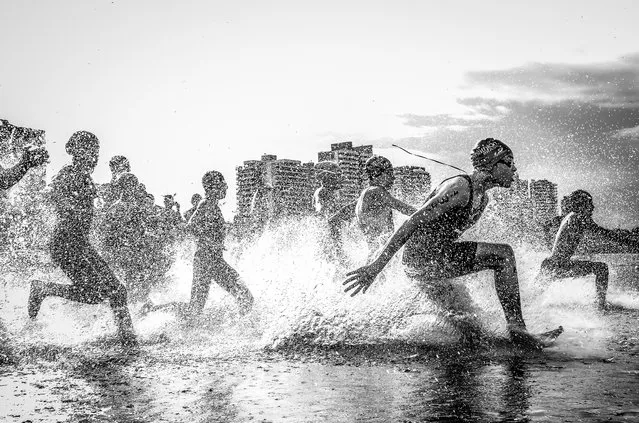
First Place Winner: “Dig me river”. I was in Manaus/Amazon during the Brazilian Aquathlon (swimming and running) championship in. This river is called Rio Negro (Black River) due to water color. Rio Negro is the largest left tributary of the Amazon, the largest blackwater river in the world. While the name Rio Negro means Black River, its waters aren't exactly black; they are similar in color to strong tea. The dark color comes from humic acid from incomplete breakdown of phenol. I photographed it from the water and my lens got completely wet, but there was so energy in this boys that I just didn't worry about that. Location: Rio Negro, Ponta Negra Beach, Manaus, Amazon, Brazil. (Photo and caption by Wagner Araujo/National Geographic Traveler Photo Contest)

Second Place Winner: “Thunderstorm at False Kiva”. I hiked out to these ruins at night hoping to photograph them with the Milky Way, but instead a thunderstorm rolled through, creating this dramatic image. – Max Seigal. National Geographic Traveler Director of Photography Dan Westergren, one of this year's judges, shares his thoughts on the second place winner: “This photo combines two different scenes into one: the small kiva in a cliff dwelling and the grand vista of Canyonlands National Park across the valley. I really like the two different color palettes – warm inside and purple outside. This two-for-one scene was caused by the lightning storm outside the dwelling, which lit up the landscape like it was a huge electronic flash. Looking at this picture I can imagine what a wonderful sight it must have been for the ancient people who lived here. It doesn't seem too amazing now in our modern world, but might have been mind-blowing for the prehistoric residents”. Location: Utah. (Photo and caption by Max Seigal/National Geographic Traveler Photo Contest)
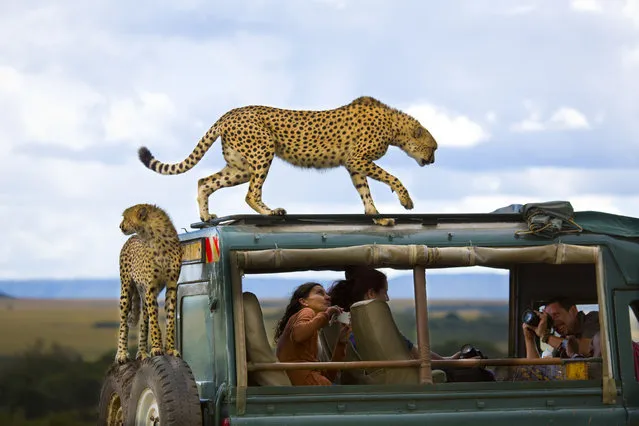
Third Place Winner: “Say cheese”. Cheetahs jumped on the vehicle of tourists in Masai Mara national park, Kenya. National Geographic Traveler Director of Photography Dan Westergren, one of this year's judges, shares his thoughts on the third place winner: “I've seen a few different pictures of cheetahs on tourist vehicles. Apparently they like to use the cars as a higher vantage point to look around. But, this picture of the cheetah skirting the open roof of this Land Cruiser brings a new vision of danger to the safari experience. It's a fun photo to look at because of all the secondary activity. The photographer in the front seat is turned around with camera to eye, but then there's the woman in the middle row, trying to capture a selfie with the cheetah in the background. Danger and subtle humor combined in one picture. What could be better?” (Photo and caption by Yanai Bonneh/National Geographic Traveler Photo Contest)
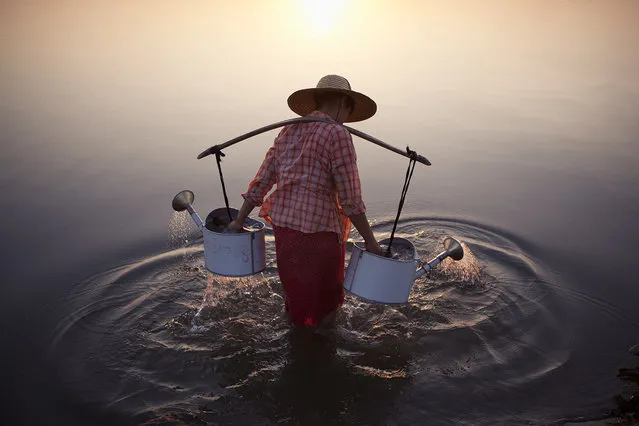
Merit Winner: “Lady in Water”. A lady collects water in the river by a village in Bagan, Myanmar, 2013. Location: Bagan, Myanmar. (Photo and caption by Marcelo Salvador/National Geographic Traveler Photo Contest)
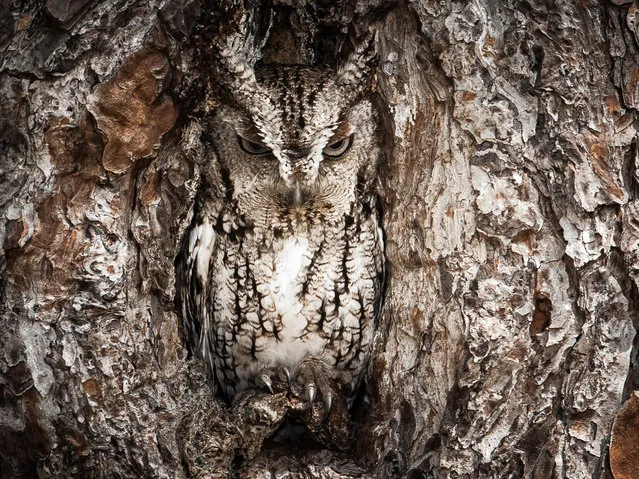
Merit Winner: “Portrait of an Eastern Screech Owl”. Masters of disguise. The Eastern Screech Owl is seen here doing what they do best. You better have a sharp eye to spot these little birds of prey. Location: Okefenokee Swamp, Georgia, USA. (Photo and caption by Graham McGeorge/National Geographic Traveler Photo Contest)

“Merit Winner: Children of Reindeer”. Mikael Ánde, a child of Sámi reindeer herders, takes a break indoors after a long, cold day of rounding up the animals for vaccinations and slaughter. Children of reindeer herders learn to handle these animals and the land they thrive in from infancy – young Mikael here knew far more about the ways of nature than I could ever hope to learn. Location: Magerøya, Norway. (Photo and caption by Michelle Schantz/National Geographic Traveler Photo Contest)
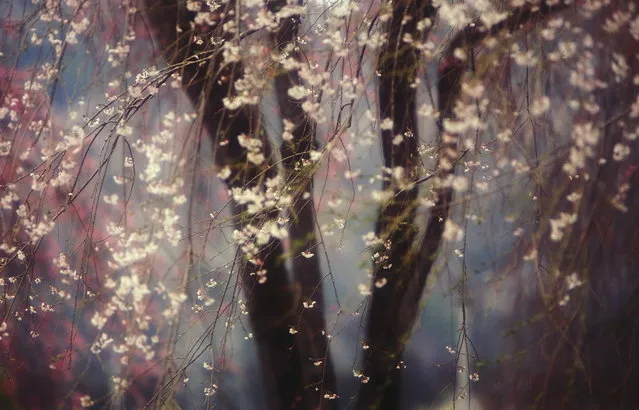
Merit Winner: “Sakura”. Cherry blossom is called Sakura in Japanese.Cherry blossom is Japanese symbolic flower.There are various kinds in a cherry tree and an especially old cherry tree has many kinds called Edo-Higan. The trees of the cherry tree exceeding hundreds of years are located in a line with a nebula this temple, and if spring comes every year,can looks at a powerful spectacle can do it. This photograph focused on Edo-Higan and photographed Beni-Sidare which is back together. Location: Seiunji-temple, Arakawa, Saitama, Japan. (Photo and caption by Hideyuki Katagiri/National Geographic Traveler Photo Contest)
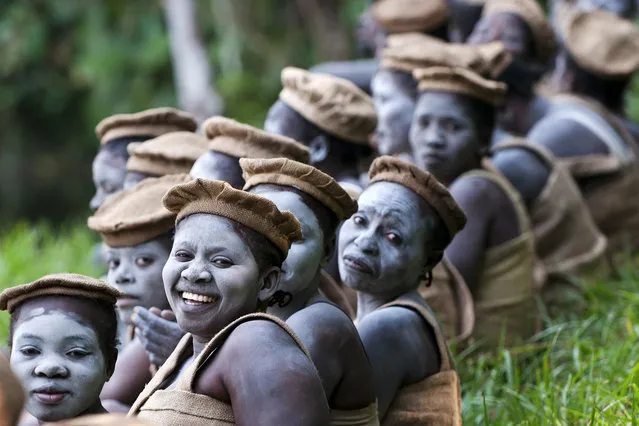
Merit Winner: “The Tata Honda sect”. The photographer could get inside of an enclosed sect named Tatahonda in the Democratic Republic of the Congo. The ladies are preparing for their religious ceremony. (Photo and caption by Gergely Lantai-Csont/National Geographic Traveler Photo Contest)
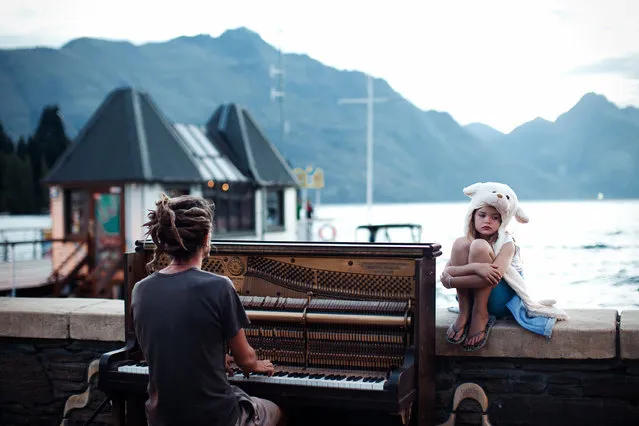
Merit Winner: “Piano play at sunset”. Streets of Queenstown, New Zealand at the end of one more day filled with adrenaline. Calming and doleful scene with piano sound in the background. (Photo and caption by Nikola Smernic/National Geographic Traveler Photo Contest)
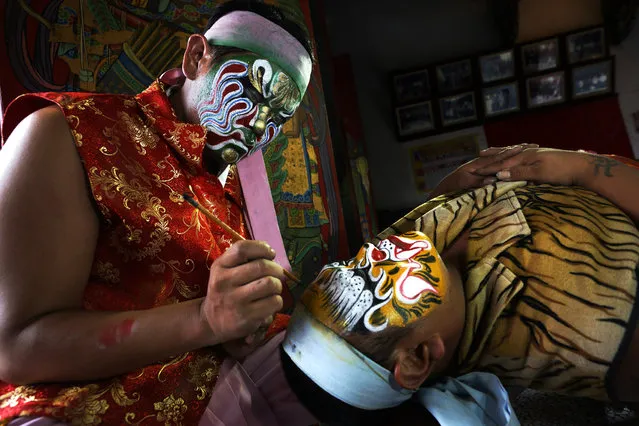
Merit Winner: “Guanjiang Shou”. Guanjiang Shou troupes are one of Taiwan most popular activities that may be seen all over Taiwan at traditional folk religion gatherings. With their fiercely painted faces, protruding fangs and powerful, choreographed performances, they are easily recognized, They may be described as underworld police or gods' bodyguards. Location: Taichung, Taiwan. (Photo and caption by Chan Kwok Hung/National Geographic Traveler Photo Contest)
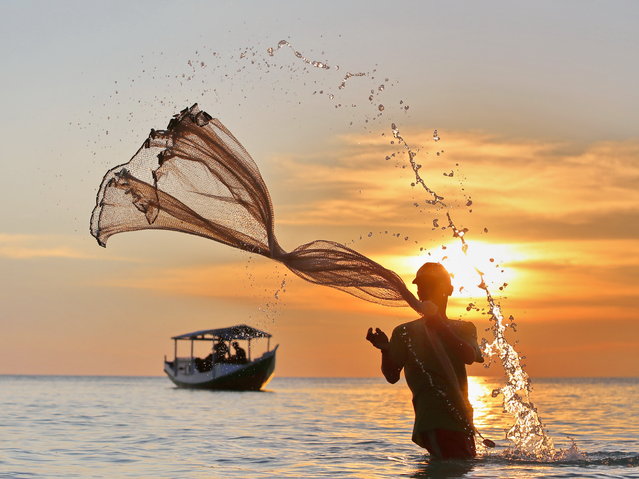
Viewers' Choice Winner: “Another perspective of the day”. The fisherman at Bira Beach. Location: taken from bira beach – Makasar, South Sulawesi, Indonesia. (Photo and caption by Dody Kusuma/National Geographic Traveler Photo Contest)
02 Aug 2013 06:16:00,
post received
0 comments
